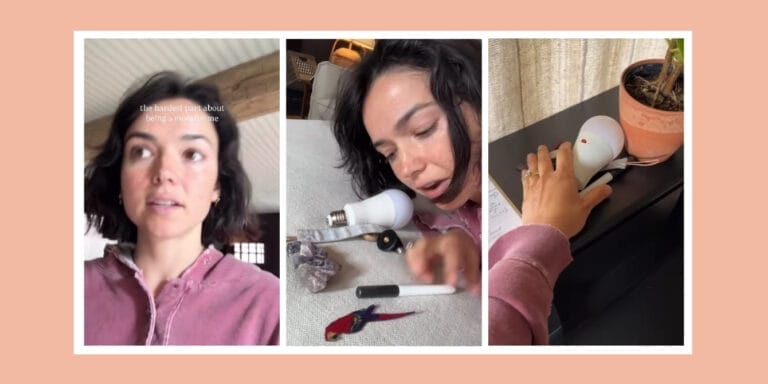The easiest way to bond with your kids? Take a walk

We love when science and fun come together.
Table of Contents
A walk with a baby, toddler or preschooler makes everyone brighter. With fresh air, exercise, and change in environment, walks are one of the best remedies for boredom, restlessness, sadness, or fussiness.
Walks also offer parents an ideal opportunity to help children learn concepts and have memorable experiences related to science, language, math, senses, nature, joy, and the community. Researchers found that daily exchanges between a parent and a child have been shown to expand children’s knowledge and skills and have lasting effects on their performance later in life—walks give parents the perfect windows to engage in these exchanges.
Making the most of each walk
Here are 10 creative exchanges that help parents teach, bond with and boost happiness in young children during walks:
1. Ask questions
During a walk, ask questions like, “Does that sound like a freight train or a passenger train?” “Why do you think the bakery is closed on Mondays?” or “Why do you think they’re putting that addition on that house?” to activate a child’s thinking.
Asking, “Why do you think that house is for sale?” or “Why do you think there’s a roof over that train stop?” helps kids practice language, problem solve, tune in to their environments, and grow their intellectual skills.
2. Plan sweet surprises
Throwing in “sweet surprises” along a walk boosts your child’s (and your) happiness. Plan an unexpected stop—the bakery for a cookie, the park for a swing ride, a field to blow bubbles, a bench for a picnic, or the library to play with the dollhouse or the little trains.
3. Draw attention to sensory experiences
Use walks to help kids notice details and sharpen senses. “I hear a bird singing!” “Train coming!” When kids smell a skunk, a yard full of dog poop, or a nasty garbage dumpster, they yell “Pee-ew!” and hold their noses, laughing. When they pass a bunch of flowers, they stop and smell them too. Young children touch the morning dewdrops and feel smooth stones. “I see an airplane! There’s a big one that’s close and a small one that’s far.”
4. Introduce math concepts
Along walks, help kids count. “Let’s try to find six garages today. Will you help me?” “Now let’s look for four chimneys.” “Let’s count the number of airplanes we hear!” “We saw two shamrocks, then another three—how many is that?” Have kids estimate by asking, “How many snowplows do you think we’ll see today?”
5. Build in fun exercise and gross motor development
Let kids jump out of the stroller and walk. Let them “walk up high” on the balance beam of the two-foot brick fences in town. Then play peek-a-boo with babies in the stroller and jump out from bushes with silly faces. Or hug trees, squat to pick up pine cones for their collections, and play at parks along the way.
6. Discuss science concepts
When you stroll by the creek, notice aloud how much water is flowing in relation to how much it’s been raining. When you walk to the pond, describe how the ducks are fishing so they can get energy to swim, stay warm, and waddle.
Discuss the markers of the seasons, such as falling leaves, wind, sprouts and buds, drizzly rain, snow, icicles and frost. Wave to your shadows and talk about how the sun changes them. Drop forest items into the water, noticing how leaves and the sticks float downstream and rocks sink to the bottom.
7. Teach them about to their community
Use walks to build kids’ community awareness. Comment that barber poles mean it’s a haircut place and that the flashing lights in front of the fire station mean the fire trucks are ready to go. Walk by fountains and see if they’re on (for summer) or off (for winter). Talk about what it means when the lightning rod at the park is flashing. Look in shop windows to talk about the sparklers for the Fourth of July, the pumpkins for Halloween, or the backpacks for back-to-school.
Do walking errands to the post office, the grocery store, the coffee shop, the library and the bookstore. Walk around the old-fashioned car show in the summer, the ice sculptures in the winter, and the scarecrow displays in fall.
By talking about everything you see, you help kids build community awareness and get new ideas to re-create or play out scenes when they get home.
8. Build basic and advanced language
Use walks to teach kids’ receptive and expressive vocabulary. “Look, there’s that house going up, see those construction workers on the roof? I wonder what they’ll build next.” “See the ladder? Look at that port-a-potty! Wow, the digger’s dropping that dirt in the dump truck!” “What else do you see?”
When you name things consistently on walks—lights, fire hydrants, flowers, fences, doggies, flags, trees, birds— they tend to be some of the first words children learn. Later, kids learn harder words like “gazebo” and “excavator” from spotting them on walks.
9. Strengthen memory
If you walk the same route, children remember parts of it, and look forward to seeing the same things. There may be a post shaped like a horse head, where you stop the stroller so your kids can reach up to feed him pretend apples and give him a friendly pat on the head.
Kids might recognize an old tractor in someone’s driveway, weird lawn ornaments, a birdbath, or a porch full of rocking chairs. Say, “Wait, something looks different. Do you notice something different?” Children love to go by houses being built so they can see the progress being made. “They put up the roof!” “Looks finished, just need to put the grass in.” During holidays, kids beg to go down certain streets so they can see “that Snoopy Santa snow globe” that’s 6 feet high or “that huge green spider web with a witch caught in it.”
10. Celebrate nature
From walks, a 2-ear old can say, “Mommy, I hear a woodpecker!” They learn to spot squirrels, bunnies, birds, and raccoons. Walking through the forest, kids love stopping to look at the way the grasshoppers jump, turtles loaf on pond rocks, and mice scurry under the bushes when they see you coming.
Have “mud walks” where you let kids sploosh around and draw in the mud with sticks. Walking in the rain lets you sing all the rain songs you know, use umbrellas (which little kids love), and feel the rain on faces. Snow walks give you and your kids time to slip, crunch, and pull each other on sleds.
Perhaps the most important thing a walk offers is the chance for parents and kids to de-stress, breathe fresh air, not rush from here to there, and revel in the joy of spending time together.
A version of this piece was published on November 14, 2017. It has been updated.


































